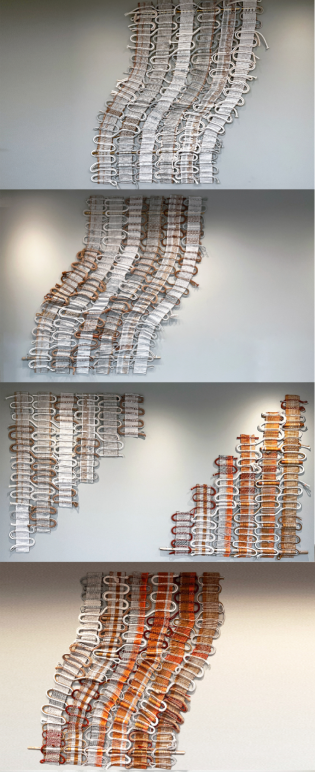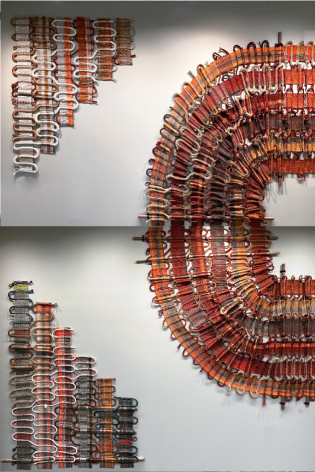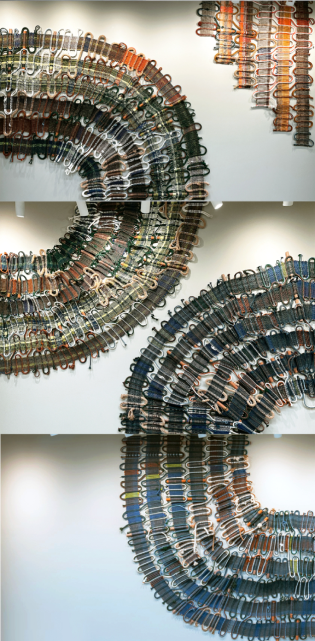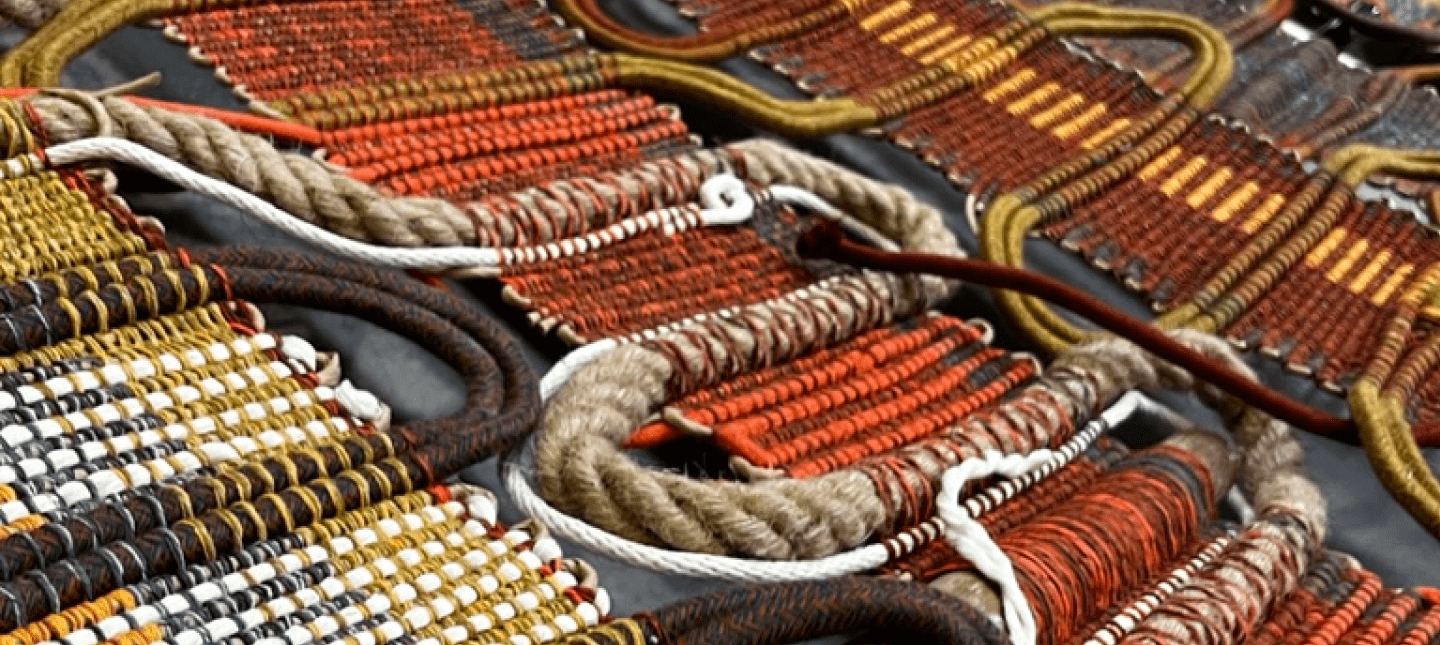Ambitious creatives, take note: Social media can be your friend.
Weaver extraordinaire William Storms, Textile/Surface Design ’13, found that out after an architect working for Amazon spotted his carefully curated Instagram feed.
Now Storms’ massive fiber art piece, Love, Grandma Jo, takes pride of place at the landmark Lord & Taylor Building, today the retail behemoth’s Manhattan headquarters.
As an FIT student, Storms won a scholarship to study weaving at the storied ENSCi–Les Ateliers design college in Paris. There, he learned techniques in passementerie—intricate trimmings such as tassels and other embellishments used for clothing and furnishings. They can be woven, braided, or knitted; he focused on the woven style, which requires exacting precision. “Weaving is color intuition and math,” he says.
After graduation, Storms founded his own bespoke textile studio in Brooklyn. The weaving wunderkind incorporated unusual materials like bullets, industrial boat rope, and terracotta tubes handmade by Peruvian artisans. He collected rare looms, like a pair from Germany made in 1971. (Extremely heavy, they required a forklift to relocate; luckily, Storms owns one.) West Elm commissioned pillows and wall art; to-the-trade textile firm Crosby Street Studios collaborated on handwoven rugs. An interior designer hired Storms to create a piece for a client’s apartment using selenite crystals for their “cleansing energy.”
Storms also worked day jobs at several textile mills, including Sunbury, mastering heavy, elaborate woven fabrics known as jacquards. He served as a classroom assistant in FIT’s knitting lab. His work paid the bills, but he hungered to become something more—an independent fiber artist. Then Amazon came calling.
In initial meetings with the design team, Storms was daunted by the scale of the piece, which would eventually stretch nine floors of the central stairwell. “Weave big,” the company’s art consultant advised. Storms found inspiration in a personal connection to the building: As it happened, his grandmother had been a Lord & Taylor devotee, and she gave Storms Christmas gifts from the place.


Executing the 300-yard piece took more than six months, during which Storms frequently gave presentations about his progress to the team. Each time, he included a photograph of the 10-foot loom in his studio to emphasize the piece’s handmade quality.
“I wanted them to know what I made this on,” he says. The commission made him financially independent at last, and it retains this craftsman’s personal touch. In the top panel, Storms wove in a signature from one of his grandmother’s Christmas cards. In the future, an art historian may find it and see why it’s called Love, Grandma Jo. —Alex Joseph


